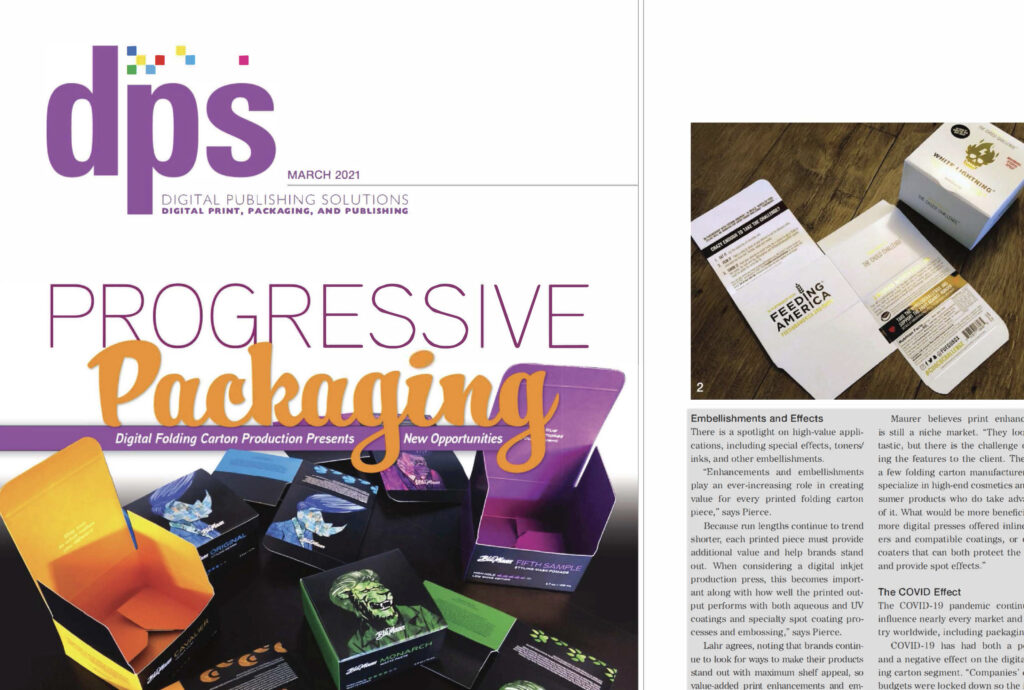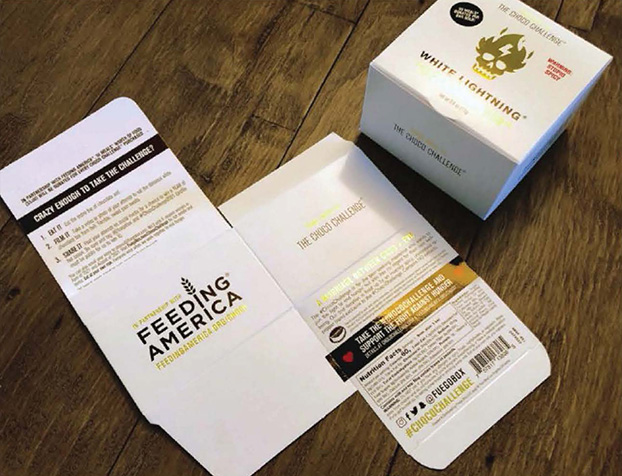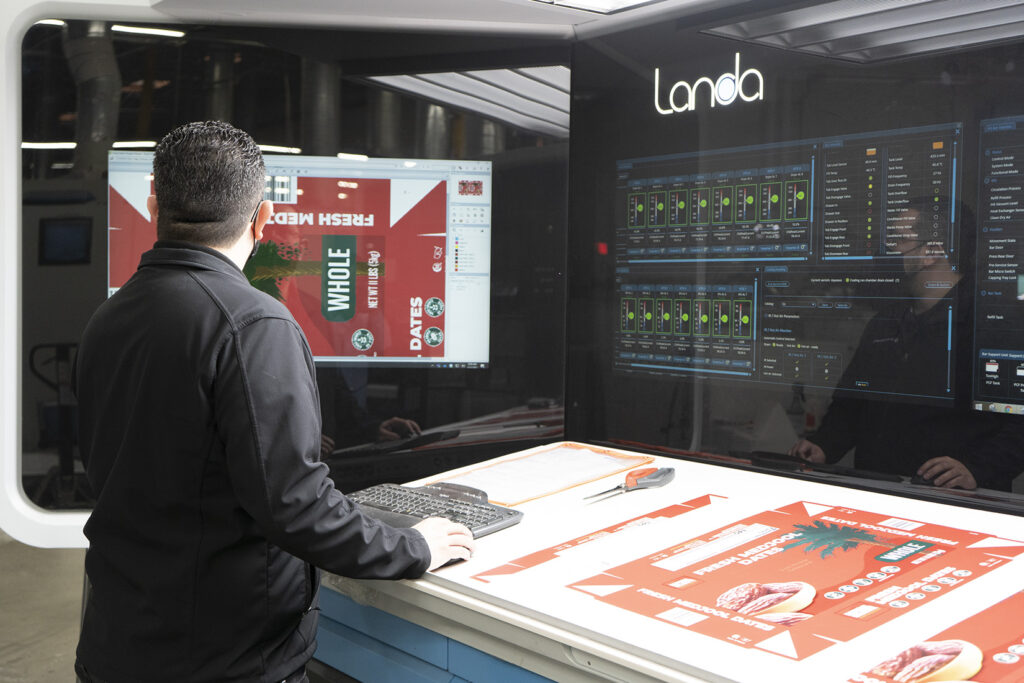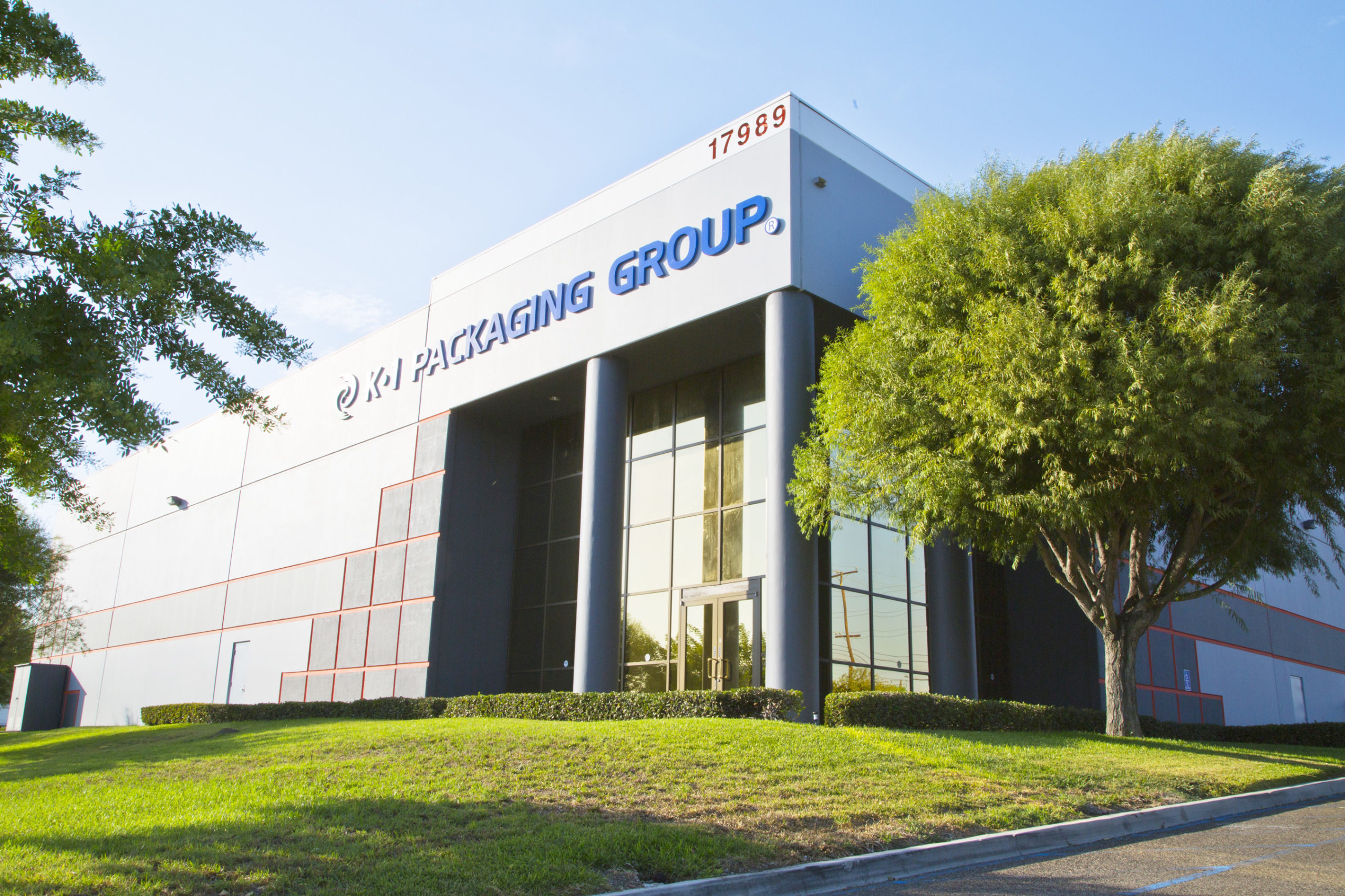
By Cassandra Balentine, Editor-in-Chief of DPS Magazine
Packaging Professionals
Folding carton production is advancing with the latest digital printing technologies. Many market drivers make the ability to cost-effectively produce short runs of folding carton applications attractive to print providers, packaging converters, and brand managers.
One company well versed in these benefits is K-1 Packaging Group, a family owned and operated business in CA. The company started as K-1 Printing & Graphics in 1993. It employs a full-time staff of 130. Its two manufacturing facilities in Southern CA have a combined area of 180,000 square feet. The City of Industry, CA facility serves as the company’s administrative headquarters as well as the manufacturing site for folding cartons and litho mounted corrugated boxes. Its Pomona, CA facility is where pressure-sensitive labels, shrink sleeves, flexible packaging, and stand-up pouches are produced.
In addition to its U.S. manufacturing locations, K-1 Packaging Group operates a supply chain procurement center in Shenzhen, China. This was established in 2006 as an ancillary service to facilitate the procurement of materials and components for customers.

Packaging Evolution
At its beginning, the company produced envelopes, letterheads, and business cards with a small format offset duplicator. At this time, the company would take on bigger commercial printing projects, but outsourced them.
Recognizing the threat of digital technology in the late 1990s, the company made a strategic pivot into the packaging space by offering folding cartons. “The initial steps were tough because we were lacking in both financial means as well as technical knowledge,” admits Mike Tsai, president, K-1 Packaging Group. “It took a lot of grit and years of persistence to slowly get established in the packaging space.”
K-1 Packaging Group’s perseverance paid off. Over time, the company added more capabilities and products to its portfolio. Today its product offerings include folding cartons, litho-mounted corrugated boxes, pressure-sensitive labels, shrink sleeves, flexible packaging, as well as stand-up pouches.
These are produced using sheetfed offset printing, sheetfed digital printing, narrow web flexographic printing, narrow web digital printing, and a host of post-press and finishing capabilities.
Specifically, the company operates offset presses from Koenig & Bauer, flexographic presses from Mark Andy and Nilpeter, and digital narrow web presses from HP Indigo. It recently invested in a Landa S-10 printing platform. “Regardless of its make and the technology behind it, each piece of equipment serves a purpose and can produce certain work, which perhaps cannot be done as well or efficiently when produced on other equipment,” shares Tsai.

Nano Technology
The company started evaluating cutting-edge digital printing technology from Landa in 2017. The purchase commitment was made in 2019. The Landa S10 press was chosen to address the ever-increasing number of short-run folding carton jobs. “Landa’s speed and efficiency at producing back-to-back, short- to medium-run jobs from small sheet sizes up to the B1 format is its biggest advantage. The short makeready time, in conjunction with its rated speed of 6,500 sheets per hour, greatly enhances our daily throughput of short- to medium-run jobs.”
Tsai says the press has consistently demonstrated the ability to reproduce colors accurately on repeat works, something that is occasionally a struggle in offset printing.
The company continues to benefit from improvement in overall productivity brought about by the Landa. Shorter runs can now be produced more efficiently, freeing up offset presses to produce larger volume jobs. Another unexpected benefit is the press’ ability to match Pantone colors well. “We have eliminated the need for spot color inks which would otherwise be required if the job were printed on the offset press,” he shares.
The Landa prints on all common substrates it uses for folding carton production, including SBS, CCNB, and other specialty substrates. The inks used are proprietary, water-based Landa NanoInk.
The package printer recently completed a 185,000-piece run of folding cartons for an essential oil product. The production quantity was spread across 25 versions. While all the versions shared the same folding carton structure, each had a different graphic design and required different quantities. As a result, there were 25 separate eight-up press forms.
“We printed each press form successively one after another, with minimal pause in between. It is truly remarkable that we printed the entire job in just ten hours,” shares Tsai.
Improved Confidence
K-1 Packaging Group’s technical competencies along with the breadth of service, products, and capabilities rival that of much larger multi-plant companies. However, its responsiveness and agility are that of a smaller and more nimble organization.
Unlike many industry sectors and businesses that have been hard hit by restrictions brought on by the pandemic, K-1 Packaging Group actually experienced record sales in 2020. Frenzy buying after the national emergency announcement, along with sustained surge in demand for packaged food, personal care, and health products, all contributed to growth experienced in 2020.
“Having experienced the benefit of digital printing, first with the HP Indigo for production of pressure-sensitive label and flexible packaging, followed by the Landa for production of folding cartons, we are fully convinced that in years to come, digital technology will continue to gain relevancy and make an impact in the packaging industry, but at an even faster pace. As we expect K-1 Packaging Group to remain on its trajectory of fast growth over the next five years, we will be keenly evaluating additional digital technology in areas of printing as well as finishing to help us support this growth,” concludes Tsai.

Challenge Accepted
The press did come with a learning curve. “The volume of technical knowledge our staff has had to acquire to gain proficiency on the press has been the greatest challenge we faced during implementation. Aside from the mechanical aspects of sheet feeding, transport, and delivery that shares commonality with sheetfed offsetting printing, all other functions are different and need to be learned from the ground up.”
Luckily, training for press and prepress personnel starts well before the installation with self-paced, web-based lessons across a multitude of topics. After installation, service engineers and instructors work intimately with the company to train staff on operation, maintenance, and troubleshooting.
“This on-site close support continues even after commencement of production. During this time, Landa’s service engineer in effect work as part of the press crew, contributing to the production of live jobs. Needless to say, the amount of support and resources that Landa has poured into this installation has been confidence inspiring,” offers Tsai.
High-Value Applications
The role of digital print in the folding carton production market is promising. As brands look for just-in-time manufacturing, heightened customization, and more SKUs, digital printing presses are poised to serve. However, it is essential to understand the limitations of your press and profit potential for this type of work.
For more about Digital Publishing Solutions Magazine, please visit their website at http://www.dpsmagazine.com/in-the-aisles/.


